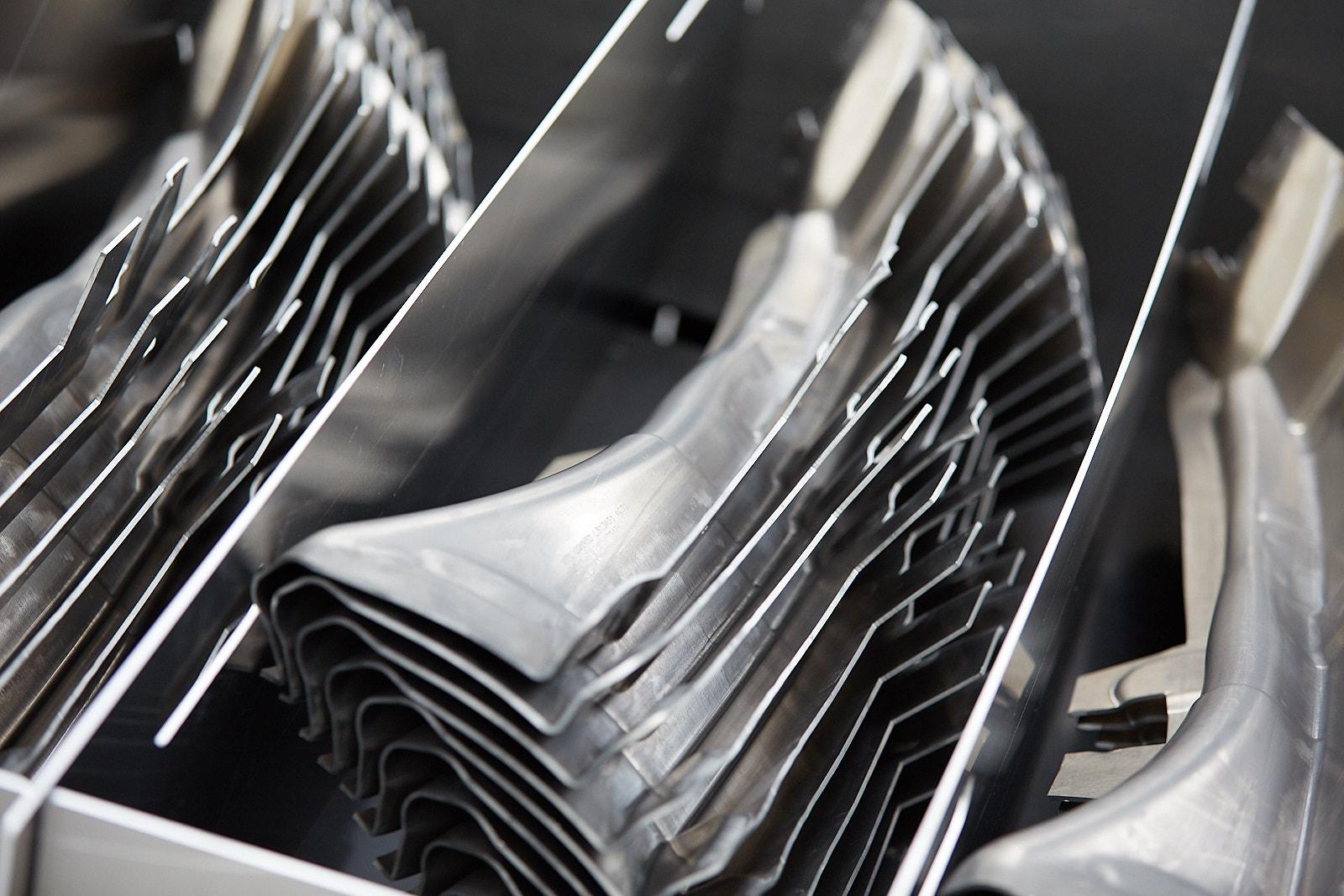
Introducing Hot Form Quench technology: the new international standard for cost-effective automotive lightweighting using aluminium
Environmental legislation to control emissions and reduce pollution continues to tighten. To meet these challenges, the automotive sector is increasingly putting faith in battery electric vehicles, hybrids and more efficient internal combustion engine vehicles, writes John Sellors, Impression Technologies Ltd
A key concern for developers is a simple one: the weight (mass) of each vehicle contributes to the energy needed to move it. The race is on to reduce vehicle weight and increase efficiency, leading to reduced emissions, increased range and improved performance. Lightweighting has never been more important and has driven a sustained increase in aluminium usage for components and vehicle structures.
Using aluminium to minimise weight is nothing new, but there is a constant mission to improve its structural strength, integrity, consistency, durability, safety and reduce cost. Moreover, manufacturers are always looking to make aluminium easier to work with, through improved, lower-cost production processes using standard, widely available alloys. Any new process must balance these factors and operate increasingly efficiently, while affording greater design possibilities.
One highly innovative solution which offers a step-change in lightweighting potential is Hot Form Quench (HFQ) technology. This pioneering, unique and easy-to-adopt process and forming simulation package allows OEMs to form deep-drawn and complex shapes from high and ultra-high-strength aluminium, replacing steel or cold-formed aluminium grades. This rapid process meets the cycle times required for low-cost, high-volume manufacturing.
Encompassing simulation, design and manufacturing of high-strength aluminium parts, HFQ aims to advance global standards of aluminium processing.
Manufacturing with aluminium in the 21st century
Aluminium has already gained a foothold in vehicle construction, particularly with premium brands like Rolls-Royce, Jaguar Land Rover, Audi, Aston Martin and Tesla. Ford has also pioneered the use of high-volume aluminium-bodied vehicles with its F-150 pick-up truck. According to research agency Ducker Worldwide, aluminium content in cars will increase by up to 30% over the coming decade, driven by lightweighting in automotive manufacturing.
Aluminium is increasingly used in closures, bumpers, sub-frames and, specifically in the premium segment, entire ‘body-in-white’ construction. Other aluminium products such as wheels, engine blocks and suspension components are now commonplace. Using aluminium for sheet product in body-in-white construction, within budgets, can also generate significant additional advantages for volume manufacturers.
By utilising HFQ-designed parts, automotive manufacturers can use a variety of different aluminium grades, namely 6xxx and ultra-high-strength 7xxx series aluminium. In future, high recycled content alloys, offering lower cost and major carbon-saving benefits, will be compatible with the HFQ process, which because of its process characteristics can maintain formability even with high impurity levels, which would otherwise render the alloy unsuitable. Linked to its inherent recycling benefits, HFQ enables the creation of a closed-loop cycle of aluminium, as up to 90% of this metal could be recycled at the end of the product life cycle.
The HFQ process
The first stage is to heat a standard heat-treatable grade of aluminium sheet in a furnace to its solutionising temperature - c.550°C depending on the grade of aluminium alloy.
From the furnace, via an automated process, the blank is transferred to a press and formed between a cold punch and die tool. The tools remain closed for five to 10 seconds to allow rapid cooling of the formed part, until the pressing is quenched. Quenching freezes the microstructure of the alloy in a supersaturated solid solution state. There is in effect, virtually no cold-working of the aluminium alloy, eliminating the need for complicated springback compensation in part designs.
Subsequently, should a heat-treatable aluminium alloy be used, the part can be artificially aged to further increase it strength, thanks to the prior quenching method – taking a little over two hours for aluminium grade AA6082 to achieve peak strength.
Partial artificial ageing may also be undertaken, followed by full ageing after the part has been assembled into the vehicle structure. Full ageing in this scenario means HFQ pressing can take advantage of the heat generated during the paint bake process to achieve optimum strength.
HFQ’s ability to improve formability widens the scope for automotive applications in terms of design freedom, process optimisation and achieving high levels of structural strength and stiffness within component Bill of Materials (BOM) cost budgets.
Conclusion
The commercialisation of HFQ Technology signifies the start of a new international standard and provides a collaborative roadmap for future light-weighting.
Many advantages can be delivered when HFQ forming is adopted at the outset of a design programme. HFQ is already validated on premium vehicles. Complex parts for world-renowned manufacturers are already under evaluation as candidates for HFQ adoption, as this unique process has the potential to deliver simpler, stronger structures, to budget.
Through HFQ, there is an opportunity to catalyse the greater adoption of high-strength aluminium alloys, allowing manufacturers to enhance and refine existing structures, while facilitating greater freedom in design and creation of new body and chassis concepts.